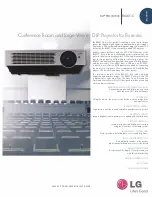
TPS3 03 Installation Instructions
Pre-Plan your installation. You need to accomplish the following:
• Meet all National and Local codes
(NEC
®
Article 285 and UL
1449 address SPDs)
• Confirm System voltage to SPD voltage
(120V SPD will fail
instantly on 240V, 277V, etc.)
• Mount SPD as close to panel or equipment as possible to keep
leads short
(long leads hurt performance substantially)
• Ensure leads are as short and straight as possible, including
neutral and ground, as equipped. If using a breaker, use
a breaker position that is close to the SPD and the panel’s
neutral & ground
• If using a breaker, recommended breaker size is 30A due to
10 AWG conductor
• Make sure system is grounded per NEC
®
and clear of faults
before energizing SPD
(inadvertent system problem may fail
SPD).
• Never Hi-Pot test Any SPD
(will prematurely fail SPD)
• Do not install the TPS3 03 through the bottom of a NEMA 3R
panel.
Dripping water will prematurely fail the SPD.
1. Use voltmeter to check voltages and ensure correct SPD. See Data
Sheet for specs & wire-outs
2. Determine Mounting method (See Figure 2) – weather resistant
equipment may be required
3. If SPD has optional Dry Contact, pre-plan its installation
4. Remove power from panel/source. Confirm panel/source is
deenergized.
5. Identify breaker location and SPD location. Position SPD such that
LED is best visible.
6. Mount SPD – weather resistant applications require additional
sealing, o-rings, etc. (not included)
-
Remove an appropriately sized knockout from panel.
-
Connect conductors as appropriate – short and straight as possible
(Hi-Legs are Phase B)
7. Label or mark conductors as appropriate (neutral: white, ground:
green, energized: black, hi-leg: orange)
8. Make sure system is bonded per NEC
®
and is clear of hazards or
faults before energizing (N-G bonding not per NEC
®
will fail SPDs:
#1 cause of SPD failures)
9. Energize and confirm proper operation of green LED indicator
and/or options.
A
B
C
G
N
BREAKER
• Use closest breaker to SPD
• Locate SPD close to intended
breaker
• Keep Leads Short as Possible
• Avoid Sharp Bends
• Rotate
SPD
such that
LED indicator is most
visible
• Outdoor installation requires
appropriate weather sealing
at nipple (o-ring, sealing
conduit, etc.)
Figure 4: Typical Panel Installation
To Protected Loads
Figure 5: Sealing o-rings
Figure 6: LEAD LENGTHS
LEADS: SHORT & STRAIGHT
CUT EXCESS; DO NOT COIL OR LOOP
•
CUT OFF EXCESS
LENGTH
•
DO NOT LOOP OR
COIL
•
SHORT &
STRAIGHT
X
Not Good
P
Good
Sealing gasket: two choices
1.) At 3/4" nom. thread: ID is 1.05"
2.) At 0.14" high 'base step': ID is 1.25"
CONDUCTING DIELECTRIC AND/OR
HI-POTENTIAL TESTING WILL CAUSE
INTERNAL DAMAGE TO SPD UNIT.
Do not perform dielectric or high potential
tests with the SPD unit installed.
CAUTION
V
Hazardous voltage.
Will cause death or serious injury.
Keep Out.
Qualified personnel only.
Disconnect and lock off all power before
working on this equipment.
V
DANGER


























